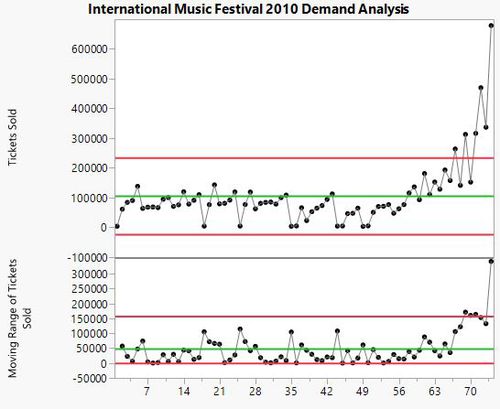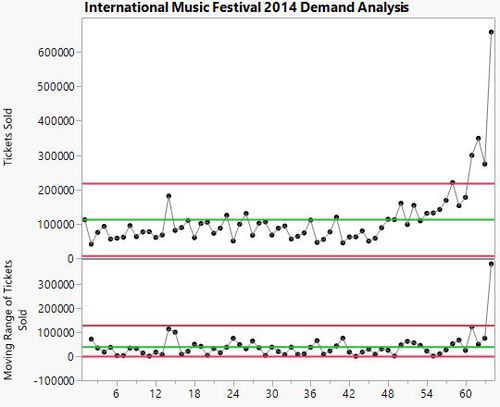Difference between revisions of "Analysis and Findings as of Mid-Terms"
| Line 68: | Line 68: | ||
* Seasonal Event - International Music Festival | * Seasonal Event - International Music Festival | ||
| − | |||
{| class="wikitable" | {| class="wikitable" | ||
Revision as of 04:20, 1 December 2016
| Mid-Term | Finals |
|---|
Throughout our Data Exploration phase, our team analyzed the variations in demands, which is defined as number of tickets sold, and this section will bring you through the interesting findings in relation to our project.
- Overall Demand Analysis
Initially, our team plotted the demand of all the events, and even though we realized that there are variations, however these variations are not really insightful.
(Picture HERE)
Thus, we drilled down further to look at the different classification of events. The graph shows that the demands for the different types of events peak differently. For example, for the regular events, which are held on a annual basis, peak during April of every year and this is caused by the demands of Coachella at California. Similarly, we also found out that the demand for seasonal events peaked during June period for year 2010, 2012, 2014 and 2015. And this is due to the International Music Festival and Hardwell World Tour Concerts.
(Picture HERE)
- Control Chart Analysis
As from the previous sub-section, our team wanted to analyze the demands further for each specific event, and thus we selected a few events to analyze the demands using Control Chart.
The Control Chart is used to analyse the demands in a time-series manner, and it allows us to visualize the movements of the demands throughout a specified time-frame. The red-lines determines the upper and lower control limits, which signifies data points out of the normal-range (at 3 standard deviations away), and in this case we are more interested in looking into the upper control limits boundary. The green line signifies the average movements of the data points.
In this analysis, we will be looking at the specific events of different event types as below:
- Seasonal Event - International Music Festival 2010
- Seasonal Event - International Music Festival 2014
- Regular Event - Coachella at California 2010 - 2012
- Regular Event - Bonnaroo at Tennessee 2010 - 2011
The main objective of the analysis is to find a pattern as to how the demand changes over time in a specific event. In addition, we are also motivated to find out at which point of time the demand is peaking at.
- Seasonal Event - International Music Festival
| Seasonal Events Control Chart Analysis | |
|---|---|
| Description: Each data point within the Control Chart signifies a single performance within the International Music Festival, and it is arranged in a time-series manner. With reference to the Control Charts above, our team discovered that most seasonal events, such as the International Music Festival, have shown that the demands have an sudden spike as the the date gets closer to the closing stages of the International Music Festival. The extreme spike in demand towards the end of the of the International Music Festival may have caused a sales bottleneck for TixCo. | |
- Regular Event - Coachella at California 2010 - 2012
| Seasonal Events Control Chart Analysis | |
|---|---|
| Description: Each data point within the Control Chart signifies a single performance within the International Music Festival, and it is arranged in a time-series manner. With reference to the Control Charts above, our team discovered that most seasonal events, such as the International Music Festival, have shown that the demands have an sudden spike as the the date gets closer to the closing stages of the International Music Festival. The extreme spike in demand towards the end of the of the International Music Festival may have caused a sales bottleneck for TixCo. | |
- Regular Event - Bonnaroo at Tennessee 2010 - 2011
| Seasonal Events Control Chart Analysis | |
|---|---|
| Description: Each data point within the Control Chart signifies a single performance within the International Music Festival, and it is arranged in a time-series manner. With reference to the Control Charts above, our team discovered that most seasonal events, such as the International Music Festival, have shown that the demands have an sudden spike as the the date gets closer to the closing stages of the International Music Festival. The extreme spike in demand towards the end of the of the International Music Festival may have caused a sales bottleneck for TixCo. | |

